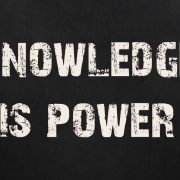Can You Use Your Self-directed IRA to Purchase Real Estate with Little or No Money Down?
 Fact or Myth?
Fact or Myth?
The guidelines for self-directed IRAs state that your IRA must put some consideration toward a real estate purchase and it does not specify ‘how much’ that consideration must be. Therefore, you can’t use your IRA to purchase real estate with ‘no money down’; however, you absolutely can use your IRA to purchase real estate with very little money down. I have clients who have used their IRAs to purchase real estate with as little as $100 down!
What are my options?
Your self-directed IRA is permitted to borrow from other IRAs and/or individuals, as long as the loan is non-recourse (Note: Non-recourse is a fancy way to say that, if you default on a loan, the lender may only seize the property and can’t go after you personally nor after funds within your IRA.)
Your self-directed IRA may also partner with other IRAs and/or individuals.
Additionally, your self-directed IRA may participate in creative techniques such as mortgage loans purchasing partials, wholesaling, fix and flip and more. Remember, if it is not expressly prohibited by the IRS, then it is permitted within your self-directed IRA.
Let’s see ‘part’ials in practice…
In this example, we employ the ‘Part’ials method. ‘Part’ials are when someone who is holding a note sells a ‘part’ of that note to another investor.
The strategy is simple; use your self-directed IRA to buy the whole note at a significant discount. Sell the number of payments as needed to pay for the entire note purchase. The remaining payments and any balloon payment that is due belongs to your self-directed IRA.
Investor 1 (John) sells his home to a newlywed couple and agrees to owner finance it for them.
- Sale Price: $110,000
- Down Payment: $10,000
- John Financed: $100,000
- Terms 360 months @ 7% interest (fully amortized) with payments of $665.30 per month.
John decides he wants to ‘cash out’ now, so he seeks out a self-directed IRA investor (Ron) to sell the note to. Ron decides he needs a 13% yield and agrees to allow his self-directed IRA to purchase the note for $65,143. Ron’s IRA gives John a $100 down payment to lock in the deal.
Since Ron only has $5,000 in his self-directed IRA he decides to sell ‘part’ of the note to another self-directed IRA investor (Tony). Tony requires an 11% yield and Ron determines that he needs to sell 250 payments to Tony totaling $65,162.00.
Remember the original note was for 360 payments…that leaves Ron with 110 payments after Tony receives his 250 payments. Since Ron is young and won’t be retiring for 35 years, he doesn’t mind waiting. Ron will receive a total of $73,183 from the 100 remaining payments-not bad for an initial investment of $100!
Let’s see a more traditional real estate deal in practice…
A young couple found a 3 bedroom/2 bathroom, 1400 square foot home available via short sale for $50,000. Their self-directed IRA put $100 down and borrowed $54,900 from another self-directed IRA investor (8% interest, amortized over 20 years with a balloon payment due in 7 years). The home needed $800 in repairs, which left the self-directed IRA with $4,200 of cash at closing ($55,000-$50,000-800). The market value of the home is $90,000 which left them with a net equity of $35,000 ($90,000-$55,000)! And that is not all! They rented the home out for $875 per month leaving them a net monthly income of $210.79 after taking out taxes ($90), insurance ($40), loan payment ($459.21), and vacancy allowance ($75).
Note: This couple was able to make this deal work because they have relationships with self-directed IRA lenders. If you let people know what you do and you listen to what other people do, you will find investors who are willing to loan you and/or your self-directed IRA money to make purchases with very little money down.





